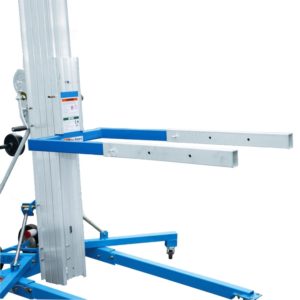Maximize Your Load: The Ultimate Guide to Forklift Extensions
Maximize Your Load: The Ultimate Guide to Forklift Extensions
Blog Article

When it comes to maximizing the efficiency of your forklift operations, understanding the tools available to you is key. Fork lift extensions are an essential accessory that can significantly enhance your lifting capacity and versatility on the job site. These extensions allow you to carry wider and heavier loads, making them a valuable addition to your material handling arsenal.
In this ultimate guide, we will delve into the world of fork lift extensions, exploring their benefits, types, and how to choose the right ones for your specific needs. Whether you are in warehousing, construction, or any industry that utilizes forklifts, understanding how to effectively leverage these extensions can lead to improved productivity and safety. Let’s unlock the potential of your forklifts and ensure you get the most out of your lifting operations.
Types of Forklift Extensions
Forklift extensions come in various types designed to accommodate different lifting needs and loads. One common type is the standard fork extensions, which can be easily attached to the existing forks of the forklift. These extensions increase the length of the forks, making them suitable for handling longer loads like lumber or piping. They are usually made from durable materials to handle the stress of heavy lifting.
Another popular type is the wide fork extensions, which provide a broader surface area for support. These extensions are ideal for transporting wider materials, such as pallets of goods or bulk items that require extra stability during transit. Using wide fork extensions helps to distribute the weight evenly, reducing the risk of tipping or damage to both the load and the equipment.
Lastly, specialized fork extensions are available for unique applications. These might include tapered or curved extensions designed for handling specific shapes, such as coils or cylindrical objects. Special extensions can improve efficiency and safety by aligning better with the load and providing a secure grip, ensuring that operators can move items safely and effectively.
Benefits of Using Forklift Extensions
Using forklift extensions significantly increases the versatility of a forklift, allowing it to handle larger and more awkward loads. With the added length, operators can reach farther and lift wider items, making it easier to transport different types of materials. This adaptability can improve operational efficiency, as the same forklift can perform a variety of tasks without the need for specialized equipment.
Another important benefit is the enhanced safety that fork lift extensions can provide. By providing a stable platform for larger loads, these extensions help to reduce the likelihood of tipping or dropping items during transportation. This stability is crucial in environments where heavy and bulky materials are commonplace, ensuring that both the workforce and the materials stay safe throughout the handling process.
Additionally, using these extensions can lead to cost savings for businesses. Instead of investing in multiple forklifts for different tasks, a single unit can be equipped with various extensions to tackle a range of jobs. This not only saves money on equipment but also reduces maintenance and operational costs, leading to a more streamlined and effective warehouse management strategy.
Safety Guidelines for Forklift Extensions
When using forklift extensions, it is crucial to adhere to safety guidelines to ensure the safety of operators and those in the vicinity. First, always ensure that the forklift is rated for the additional load capacity when extensions are attached. Forklift extensions can increase the overall load length, which may impact the stability and lifting capacity of the vehicle. Operators should check the manufacturer's specifications and guidelines to ensure compliance.
Forklift Extension Forks
Operators must also practice safe lifting techniques when using extensions. This includes ensuring that loads are evenly distributed and properly secured on the forks. Avoid exceeding the maximum load capacity and always keep the center of gravity in mind, as an unbalanced load can lead to tipping or loss of control. Conduct regular inspections of the extensions for any signs of wear, damage, or deformation before use.
Training is another essential aspect of safe operation. Only trained and authorized personnel should operate forklifts with extensions attached. Proper training should cover the specific risks associated with using extensions, such as increased swing and reduced visibility. Emphasizing the importance of communication within the team will help maintain a safe working environment while using forklift extensions.
Maintenance Tips for Forklift Extensions
Regular inspection of forklift extensions is essential for ensuring safety and longevity. Check for any signs of wear, such as cracks or bends, which could compromise stability. Pay close attention to the welds and joints, as these are critical points that undergo significant stress. It's also important to verify that the extensions are properly attached to the forklift and that any locking mechanisms are functioning correctly.
Cleaning forklift extensions can prevent rust and enhance visibility. After each use, remove any debris such as dirt, oil, or residue left from loads. Use a suitable cleaning solution and a soft brush to avoid scratching the surface. Ensure that all moving parts are free of dirt, as this can lead to malfunctions. Regularly applying a protective coating can also help shield the metal from corrosion and wear.
Finally, proper storage of forklift extensions can extend their lifespan significantly. Store them in a clean, dry area away from direct sunlight and extreme temperatures. Use protective padding or covers to prevent scratches and dents during storage. Always follow the manufacturer's guidelines regarding weight limits and operational procedures to ensure that the extensions maintain their integrity and continue to perform reliably.
Report this page